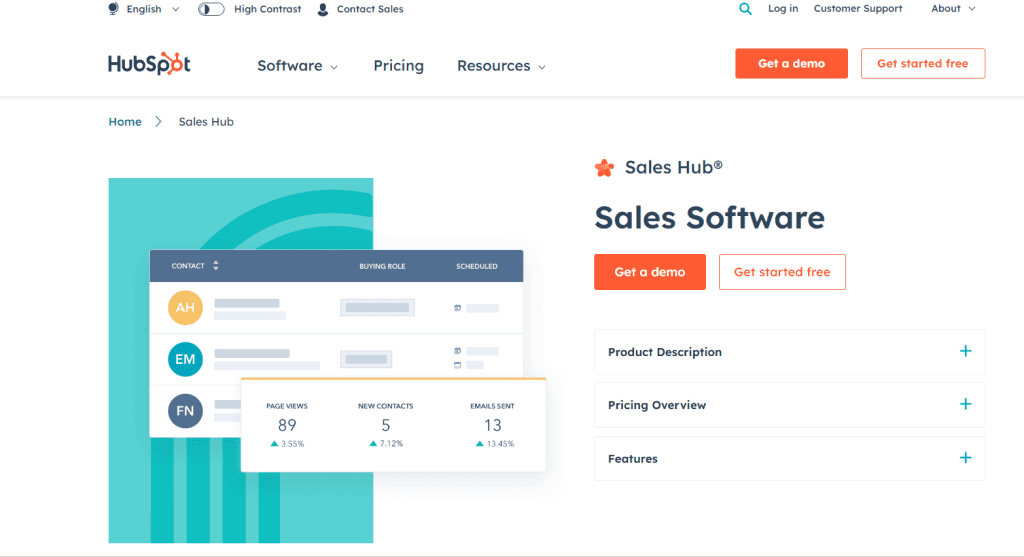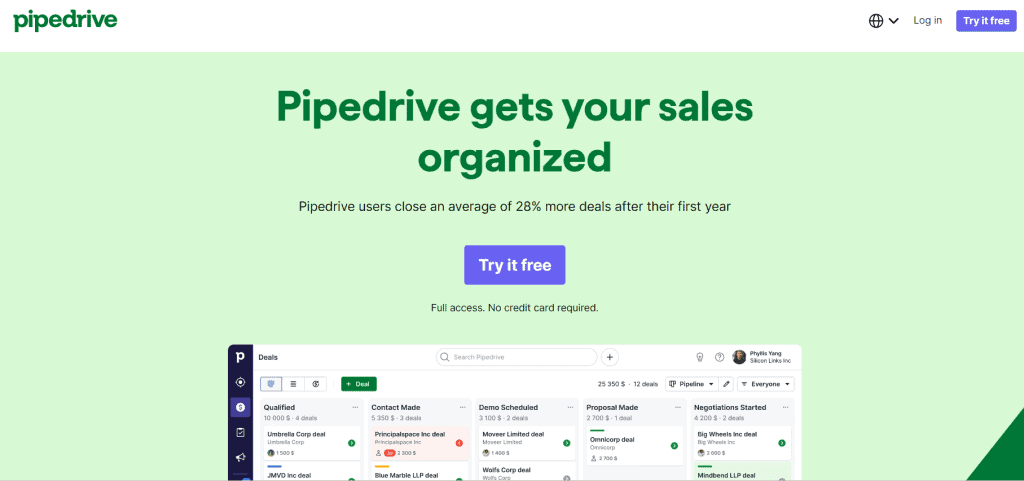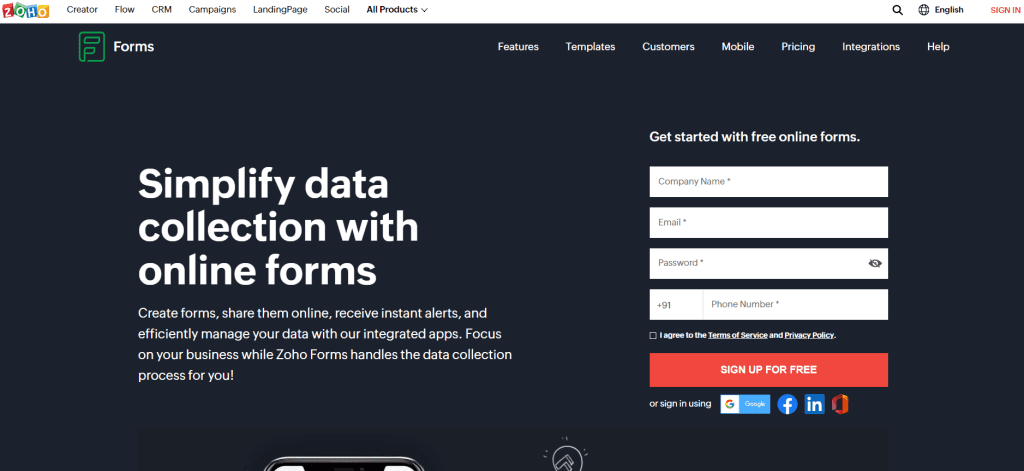3 Stages of Sales Pipeline and its Importance
Sales pipeline management is crucial for any business looking to grow its revenue and improve its sales and marketing performance.
In this blog post, we’ll explore the three stages of a sales pipeline, the benefits of using a sales pipeline, and provide a step-by-step guide on how to build and manage a high-converting sales pipeline.
We’ll also recommend three excellent sales pipeline management tools to help you get started. Whether you’re a small business owner or a sales professional, this post will provide valuable insights to help you optimize your sales process.
What is a sales pipeline?
A sales pipeline is a visual representation of the sales process, from the initial contact with a prospect to closing a deal.
The pipeline is divided into stages, and each stage represents a different step in the sales process. Each deal or prospect is assigned to a stage, and businesses can track the progress of each deal through the pipeline.
The stages of a sales pipeline will vary depending on the type of business and the sales process. However, common stages include prospecting, lead qualification, proposal, negotiation, and closing the sale.
By organizing the sales process into stages, businesses can identify where prospects are in the sales process and take appropriate action to move them closer to closing the sale.
Sales pipeline vs. sales funnel
While the terms “sales pipeline” and “sales funnel” are often used interchangeably, they refer to different concepts. A sales pipeline is a visual representation of the sales process, whereas a sales funnel is a theoretical model that describes the journey that prospects take from initial awareness to making a purchase.
The sales funnel is typically divided into four stages: awareness, interest, decision, and action. Prospects move through the funnel, with a decreasing number of prospects at each stage until a sale is made.
The main difference between a sales pipeline and a sales funnel is that a sales pipeline focuses on the sales process and individual deals, while a sales funnel focuses on the buyer’s journey and the overall sales process.
Three key benefits of using a sales pipeline
Using a sales pipeline provides several key benefits for businesses of all sizes, including:
a. Provides detailed insights into your deals
A sales pipeline allows businesses to track the progress of individual deals through the sales process. By assigning each deal to a stage in the pipeline, businesses can easily see where each deal is in the sales process and take appropriate action to move it forward. This level of visibility allows businesses to identify bottlenecks in the sales process and take steps to address them.
b. Helps forecast your revenue accurately
By tracking the progress of individual deals through the sales pipeline, businesses can accurately forecast their revenue. They can see how many deals are in each stage of the pipeline and use historical data to predict how many deals will close in a given period. This level of accuracy allows businesses to make informed decisions about budgeting and resource allocation.
c. Improves your sales and marketing teams’ performance
A sales pipeline can improve the performance of both sales and marketing teams. Sales teams can use the pipeline to track the progress of their deals and focus their efforts on the deals that are most likely to close. Marketing teams can use the pipeline to identify the most effective lead generation channels and create targeted messaging that resonates with prospects at each stage of the pipeline.
How to build and manage a high-converting sales pipeline (step-by-step)
Building and managing a high-converting sales pipeline requires careful planning and execution. Here are the steps to follow:
a. Choose your sales pipeline stages
The first step is to choose the stages of your sales pipeline. This will depend on your sales process and the type of business. Common stages include prospecting, lead qualification, proposal, negotiation, and closing the sale. However, the number and names of the stages can vary depending on the business.
b. Organize your prospect list
Once you have defined your sales pipeline stages, the next step is to organize your prospect list. This involves identifying and categorizing your leads based on their stage in the sales process. You can use a CRM system or spreadsheet to track your prospects and their progress through the pipeline.
c. Define the sales activities of each pipeline stage
The next step is to define the sales activities that should take place at each stage of the pipeline. For example, at the prospecting stage, sales activities might include researching potential clients, identifying decision-makers, and reaching out to them. At the proposal stage, activities might include preparing and presenting a proposal, addressing any objections or concerns, and negotiating terms.
d. Review your sales pipeline periodically
It’s important to review your sales pipeline periodically to ensure it is working effectively. This involves looking at each stage of the pipeline, identifying any bottlenecks or areas for improvement, and making changes as necessary. Regular reviews also help to ensure that your sales activities are aligned with your overall business goals.
e. Hone your sales pipeline
Finally, hone your sales pipeline to improve its effectiveness. This involves testing different sales activities and strategies to see what works best for your business. You can also gather feedback from your sales and marketing teams and your customers to make further improvements to your sales pipeline.
Three excellent sales pipeline management tools
There are many tools available to help businesses build and manage their sales pipelines. Here are three excellent options:
1. HubSpot Sales

HubSpot Sales is a CRM platform that includes a sales pipeline management tool. It allows businesses to track deals through the sales process, create custom sales stages, and set up automated email sequences. HubSpot Sales also integrates with other HubSpot tools, including marketing automation and customer service.
2. Pipedrive

Pipedrive is a CRM platform that focuses on sales pipeline management. It allows businesses to customize their sales stages, track deals through the pipeline, and generate reports to track progress. Pipedrive also includes a mobile app, making it easy for sales teams to access their pipeline on the go.
3. Zoho CRM

Zoho CRM is a cloud-based CRM platform that includes a sales pipeline management tool. It allows businesses to customize their sales stages, track deals through the pipeline, and set up automated workflows. Zoho CRM also includes a range of other tools, including marketing automation and customer service.
Wrapping Up
Sales pipeline is an essential tool for businesses of all sizes that want to track their progress, accurately forecast their revenue, and improve the performance of their sales and marketing teams.
By following the steps outlined in this blog post and using one of the excellent sales pipeline management tools recommended, businesses can build and manage a high-converting sales pipeline that helps them achieve their business goals.